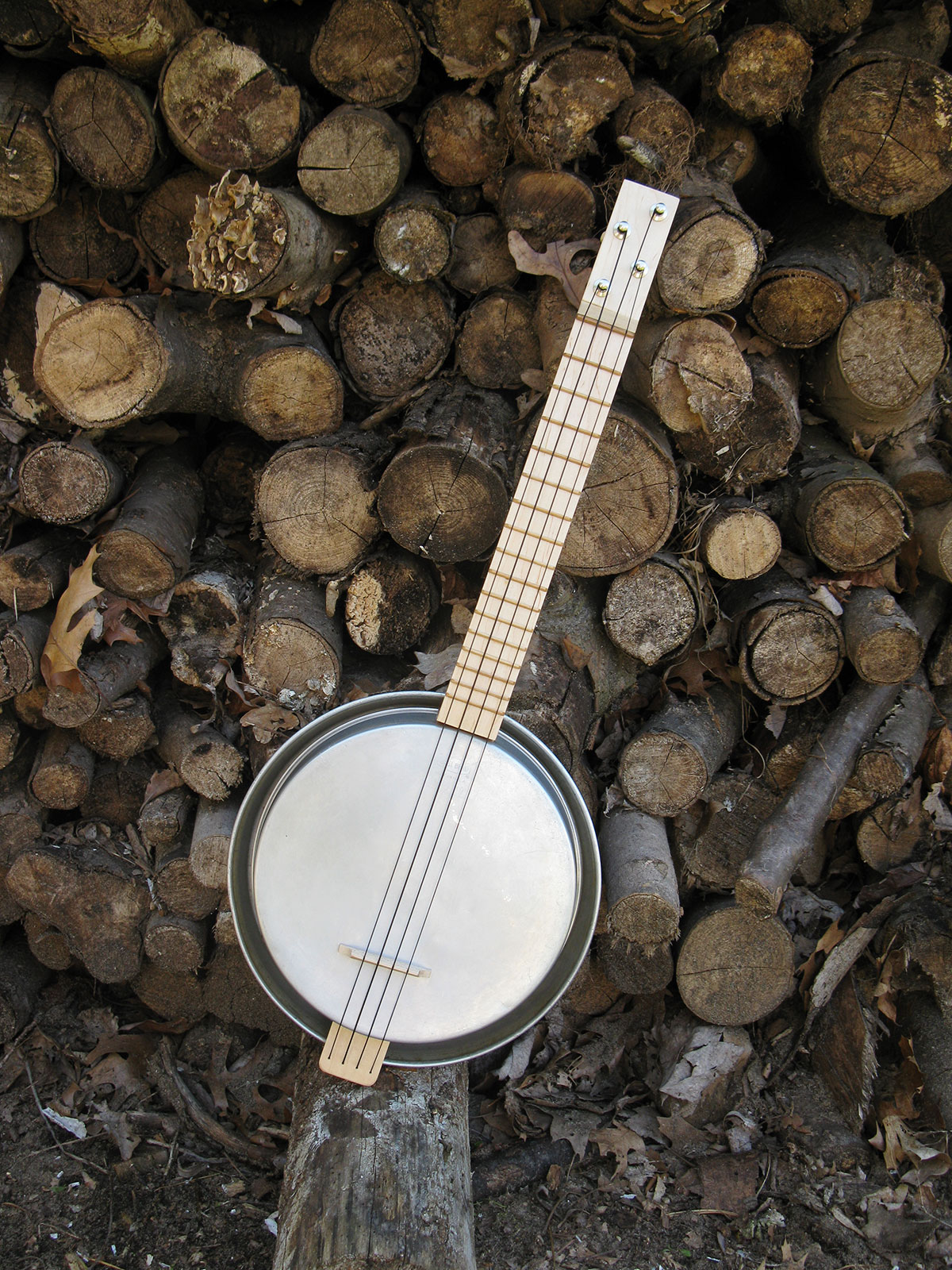I love making my own musical instruments. Nothing beats the feeling of playing your own tunes on an instrument you made yourself. While the best instruments are made by skilled craftspeople with high-quality materials, it can be very rewarding to craft an instrument with simple components at hand.
A few years ago I got interested in the idea of making my own cigar box ukulele. I had a nice box and the wood to make the neck but I needed a lot of other parts, like frets and a slotted fretboard and tuners and strings, that I had to order and wait for them to arrive. But I wanted it done right then! So while I waited, I thought about how those parts functioned and what I could substitute.
I remembered someone using toothpicks for frets on cigar box guitars, and while I was wary of steel strings cutting into the wooden frets, I thought a ukulele’s nylon strings should be fine. Toothpicks for frets: check.
I’d also seen a lot of instruments built with cookie tins for the body, so I headed to the local resale shop to look for one. No tins, but what I did find was even better. Nice, rigid aluminum cake pans, in two sizes. “Resophonic instruments use aluminum cones, don’t they?” I thought. Cake pans for the body: check.
I brought my treasures home and found a nice piece of hardwood for the neck. Luckily, I had a set of tuners and strings on hand. I got to work and a few days later, I had a cake pan uke!
The name? Early in ukulele history, Alvin D. Keech introduced a banjo ukulele that eventually got the name banjolele. Looking like it does, it seemed natural to call my instrument a Cake Pan-jolele, or Panjolele for short.
Materials
From a hardware store:
- Hardwood lumber, 1×2 nominal, 36″ length Actual size is ¾”×1½”. Choose oak, maple, poplar, or other hardwood, as straight and as knot-free as possible.
- Wood screws, #6×1¼”, Phillips head (3)
- Wood glue
- Spray lacquer or polyurethane, clear (1 can)
- Sheet metal screw, 2″, pan head
From a resale shop or department store:
- Cake pans, aluminum or steel, 2″ deep: 9″ diameter (1) and 8″ diameter (1) — Cake pans have sides at right angles to the bottom, and are deeper than pie pans. Steel is OK, but rigid aluminum pans are easier to cut and have a better sound.
From a music store:
- Ukulele friction tuners (set of 4) — I’m using a basic $13 set, item #UP26 from Elderly Instruments (elderly.com), but for just $15 you can get better quality tuners, Elderly #GUKNW.
- Ukulele strings, concert scale length (set of 4) — I’m using a basic $3 set of Hilo black nylon strings, Elderly #HCU. For $5, Aquila’s Nylgut set, Elderly #ANCR, has the sound of old-fashioned gut strings.
From a grocery store:
- Square wooden toothpicks (20) — You can also get these from Lego Education (legoeducation.us), item #W751742.
Tools
- Pencil
- Ruler with e” marks
- Marking pen, fine tip
- Square, adjustable
- Handsaw or power miter saw
- Sanding block and sandpaper — in various grits
- Drill or drill press
- Drill bits: 5″, 1″, 6″, 2″, and #6 countersinking bit
- Screwdriver, Phillips head
- Spring clamps (2 or more)
- Hacksaw with fine-tooth blade
- Rotary tool with cut-off wheel — such as a Dremel
- Needle files including a triangular file
- Rasp or Surform plane/rasp
- Flush nippers, end cutters, toenail clippers, or a utility knife
Make Amends
In Step 2b of the print version, Step 4 of the online version, the two holes are shown 1¼” away from the end of the brace. This puts them a little too close to the end of the neck. Author Chester Winowiecki recommends changing that dimension to 1″ or 1-1/8″.
On page 83 (print; online Step 9) we advised readers to draw a chord and its perpendicular three times to find the center of a circle. It’s only necessary to draw two such perpendiculars; their intersection will mark the center. Thanks to reader Michael Nachtigal of Wesley Chapel, Fla., for the fix!

MAKE Volume 33 features our special Software for Makers section covering apps for circuit board design, 3D design and printing, microcontrollers, and programming for kids. Also, meet our new Arduino-powered Rovera robot and get started with Raspberry Pi. As usual, you’ll also find fascinating makers inside, like the maniacs on our cover, the hackers behind the popular Power Racing Series events at Maker Faire.
Try your hand at 22 great DIY projects, like the Optical Tremolo guitar effects box, "Panjolele" cake-pan ukelele, Wii Nunchuk Mouse, CNC joinery tricks, treat-dispensing cat scratching post, laser-cut flexing wooden books, sake brewing, growing incredibly hot “ghost chili” peppers, and much more.
On newsstands now, by subscription, or available in the Maker Shed




